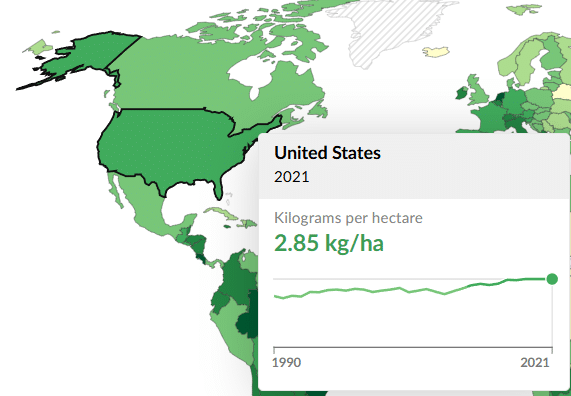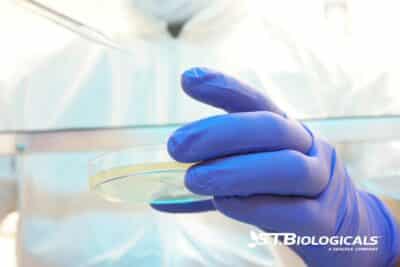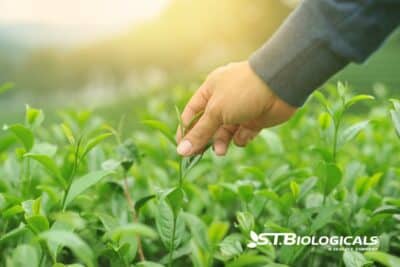There are two ways to get nutrients to your crops: chemistry or biology. Plants have evolved complex relationships with soil biology. Microbes break down organic matter and aid in nutrient recovery for your crops. But do you have the right biology in your soil to decompose your crop residues?
Beneficial or Pathogenic Soil Microorganisms
When you think about soil biology, do you immediately think of plant disease? In 2021 US farmers sprayed on average 2.85kg/ha (which equals 2.51lb/ac) of pesticides, and this trend is on an upward trajectory.

The vast majority of bacteria and fungi are beneficial, so the use of those pesticides is depleting US farm soils of beneficial allies. Soil microbes increase nutrient cycling in the plant root zone and do their work for free.
How Does Biology Decompose Organic Matter?
The right bacteria and fungi have to be present in your fields. There are many species of decomposer bacteria and fungi. Your fields and crops benefit from their decomposing activities. Soil biology is breaking down the crop residues on your field so they can live. In the process of gaining nutrients, they also cycle unneeded nutrients into the soil. As smaller bacteria and fungi are eaten by larger microorganisms, more nutrients are cycled.
Decomposers are heterotrophic, which means they gain energy from ingesting organic materials. Without these decomposing microorganisms, there would be no decay of organic matter. No amount of tilling would incorporate organic matter into the soil. They are always working, but we can help them be more efficient and improve soil health and crop nutrient profile.
The roles of decomposing microorganisms go beyond breaking down organic materials, they also keep pathogens at bay and bring nutrients to plants in exchange for sugars and carbon. There are two primary types of decomposers: bacteria and fungi. Both create a nutrient-rich area for plant roots.
Adding Biology to Your Fields
Increasing the biology in your field increases nutrient cycling, carbon sequestration, and water retention. When you create a multi-species biome, you’re adding a plethora of beneficial bacteria and fungi. Healthy soil full of microorganisms reduces the need for synthetic inputs and saves you money.
Bacteria and fungi have relationships with plant roots. Microorganisms can synthesize particular compounds for plants, facilitate uptake of certain nutrients in the soil, and protect plants from disease and insect pests. The Bacillus bacteria are widely used for pest control. Rhizobium promotes nodulation on the roots of legumes, such as soybeans. Fungal soil allies can be either endophytic or arbuscular. The endophytic fungi attach to the interior of the plant root and stimulate plant growth. Beneficial fungi also protect plants against fungal diseases through various mechanisms including antibiosis, parasitism, host-plant resistance, and competitive exclusion .
Most agricultural soils are bacteria-dominant, so to ensure you maintain the fungal components, we recommend the use of no-till or low-till practices. Bacteria are one-celled microorganisms that can handle some rough treatment, but beneficial fungi with long threads that seek out food and water during droughts can’t. It’s important to consider your farming practices when adding biologicals to your fields.
Whenever you have a healthy diverse population of beneficials, there is much less space for pathogenic microorganisms.
One way to make sure you have that diversity in your soil is through the use of a biological input. At ST Biologicals we recommend LiquiLife+ from Purple Cow Organics. There are more than 2,000 species each of bacteria and fungi in LiquiLife+ that are naturally occurring. Plant-bacterial interactions determine the soil’s fertility and the health of the crops in that field. Many beneficial bacteria can colonize the plant’s roots and provide multiple plant growth-promoting functions.
To find out more about this product and how it would work on your farm or ranch, contact our team at STBiologicals.com. We’re here to help you succeed.

